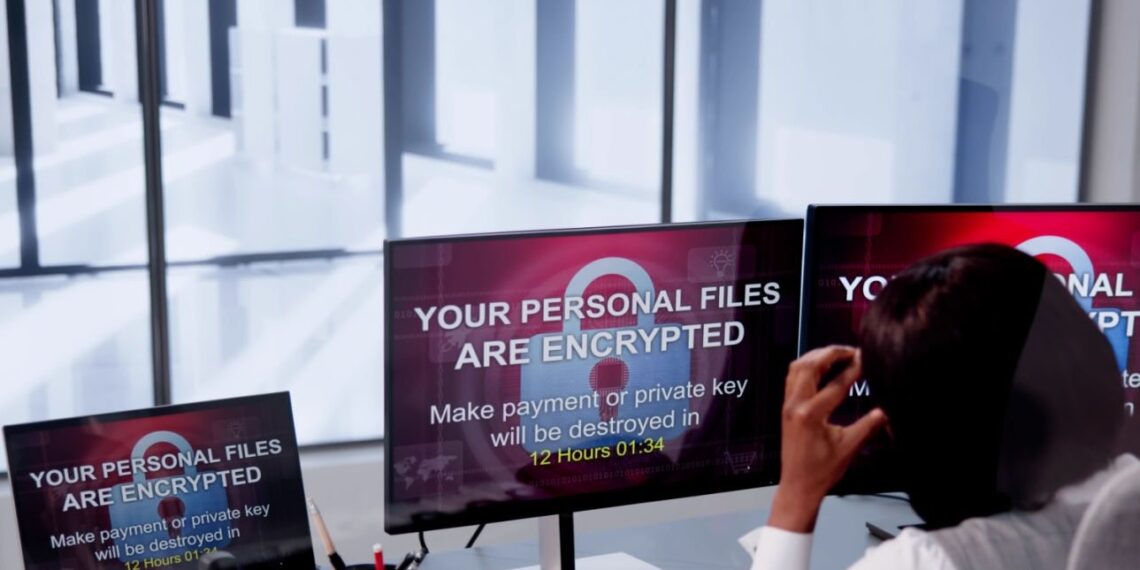A recent whitepaper by Sophos, a cybersecurity firm, sheds light on the growing trends of ransomware attacks.
While there’s hope for a slight decrease in global attack rates, the findings highlight the continued threat ransomware poses to organizations of all sizes.
The Sophos whitepaper, based on an independent survey of 5,000 IT and cybersecurity leaders across 14 countries, revealed that 59% of organizations have been affected by ransomware attacks in the past year. This shows a decline compared to the 66% reported in the previous two years.
Interestingly, the data reveals a correlation between organization size and ransomware impact. Larger enterprises with revenues exceeding $5 billion faced the highest attack rate at 67%, pointing to the attractiveness of these organizations as lucrative targets for cybercriminals.
The report also showed variations in attack rates across different sectors. Central and federal government agencies are the most targeted, with a 68% hit rate. In contrast, state and local government entities, along with retail businesses, report a lower attack rate, with less than half of organizations in these sectors experiencing ransomware incidents.
The primary root causes identified for ransomware attacks were exploited vulnerabilities in existing software, compromised credentials, and malicious emails. These findings highlighted the need for organizations to strengthen their cybersecurity watch, consistent patching and system updates through vulnerability management and email security protocols.
One of the most concerning trends highlighted in the whitepaper is the attempt to compromise backups by ransomware attackers. 94% of organizations affected reported such attempts, emphasizing the importance of secure and isolated backup solutions. Again, data encryption occurred in 70% of ransomware incidents, with data theft also reported in 32% of cases, noting the dual threat posed by ransomware campaigns.
Despite the disruptive nature of ransomware attacks, a majority of organizations managed to recover their encrypted data, primarily through robust backup strategies or, in some cases, through ransom payments. Notably, 97% of organizations engaged with law enforcement or government agencies for support during ransomware incidents, highlighting the collaborative approach necessary to combat cyber threats effectively.
In response to these findings, the Sophos Whitepaper emphasizes the importance of implementing solid cybersecurity measures. Key recommendations include:
- Regular Patching and Updates: Keep all software, operating systems, and applications up to date. Regularly apply security patches to address known vulnerabilities.
- Multi-Factor Authentication (MFA): Implement MFA wherever possible. This adds an extra layer of security by requiring users to provide additional authentication factors beyond just a password.
- Backup Strategy and Testing: Maintain regular backups of critical data and systems. Ensure that backups are stored securely and test their integrity periodically. Backups are crucial for recovery in case of a ransomware attack.
- User Training and Awareness: Educate employees about the risks of phishing emails, suspicious attachments, and social engineering tactics. Regular security awareness training can help prevent successful attacks.
- Network Segmentation: Segment your network to limit lateral movement for attackers. Restrict access to critical systems and sensitive data based on user roles and responsibilities.
- Incident Response Plan: Develop a comprehensive incident response plan that outlines steps to take during a ransomware attack. Test the plan regularly to ensure effectiveness.
- Engage with Law Enforcement: In the event of a ransomware incident, collaborate with law enforcement agencies. They can provide guidance and support during investigations.
Cybersecurity is an ongoing process, and organizations should adapt their strategies based on emerging threats and best practices.






